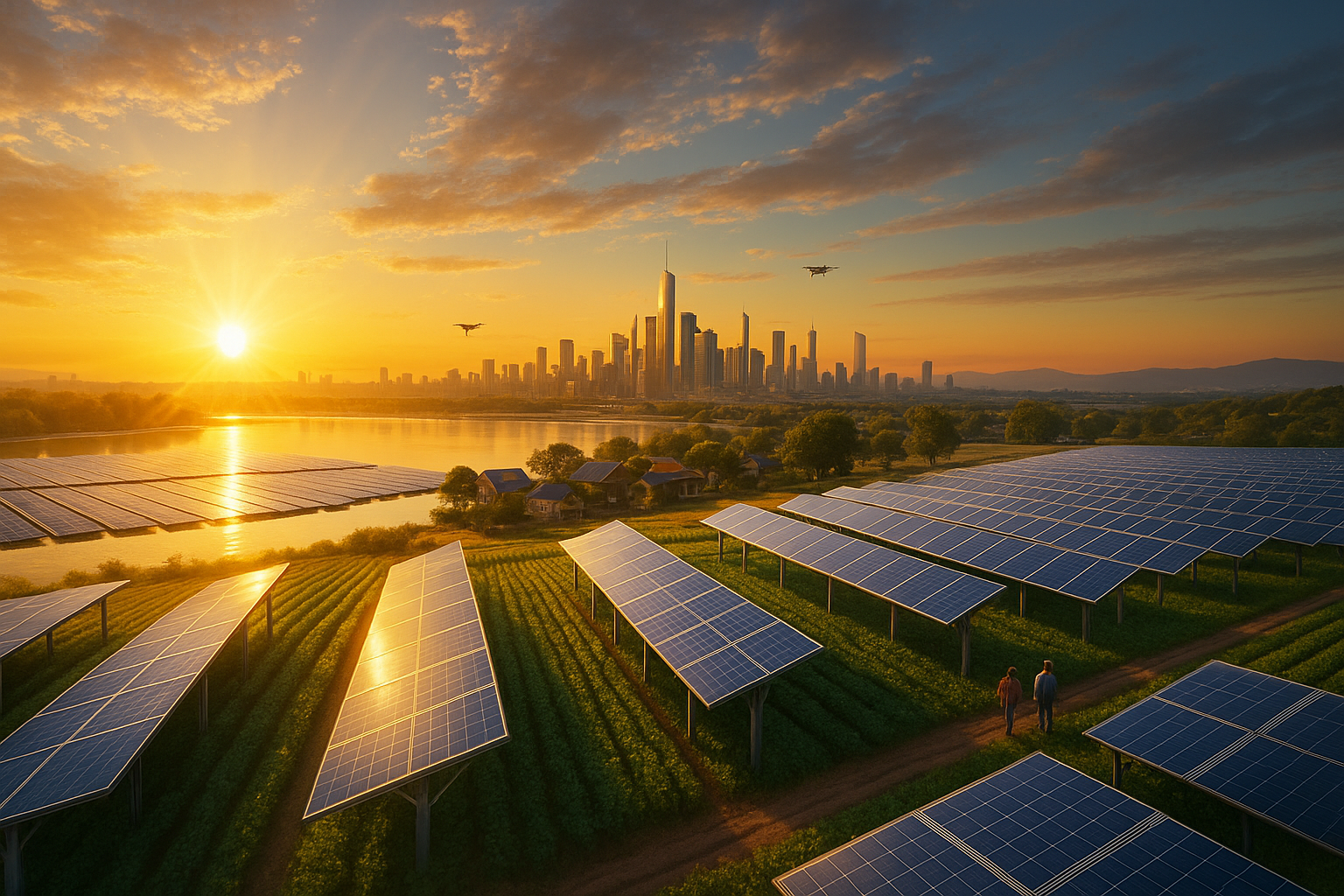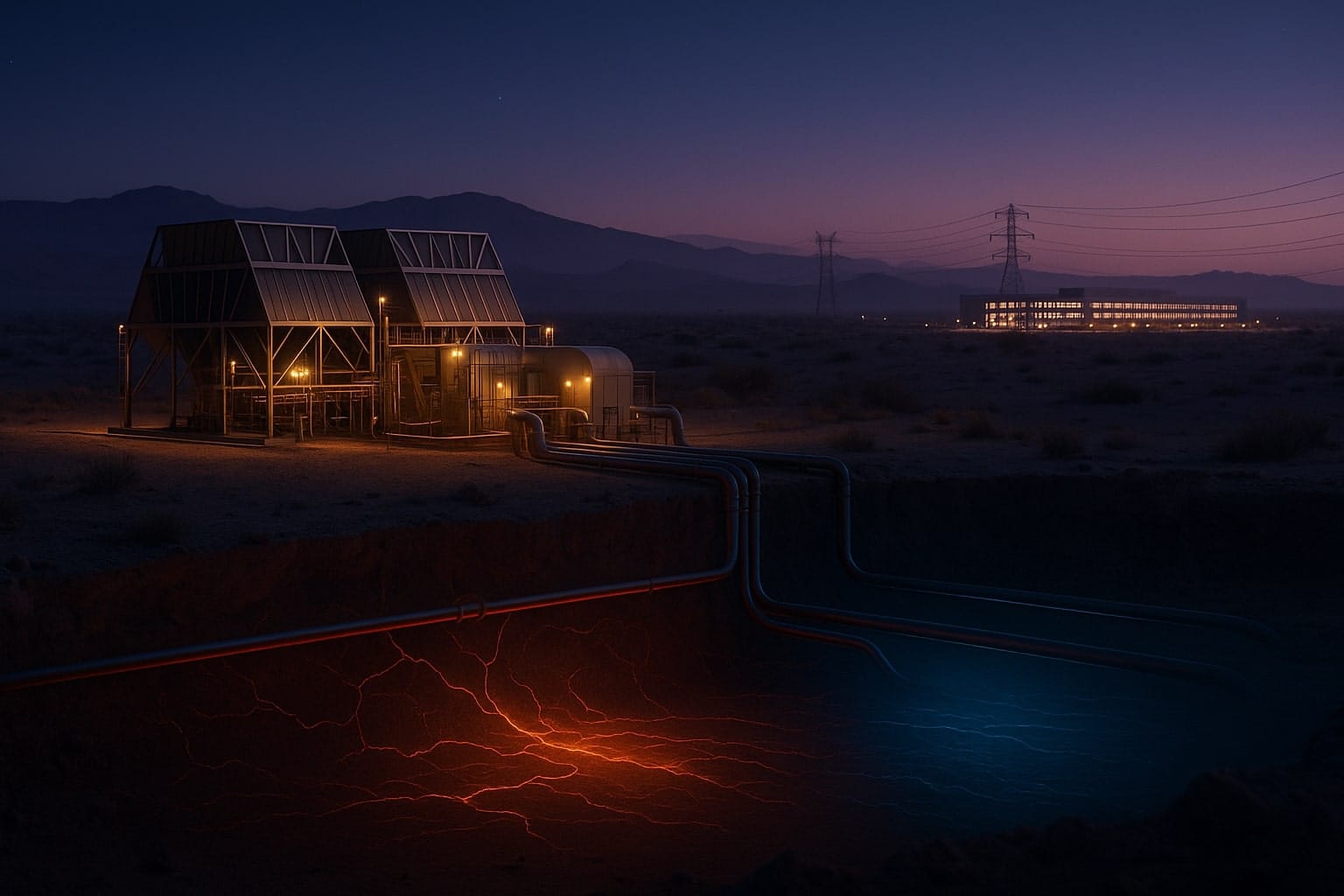“Sunlight is the only commodity whose price history points inexorably toward zero.”
What sounds like techno‑utopian hype is now hard data. In 2024 the world wired a record 554 GW of new solar capacity, pushing the global total beyond 2.2 TW—more generation than the entire U.S. grid produced fifteen years ago. Meanwhile, a Chinese overcapacity cycle drove module prices down nearly 30 % in a single year, tipping solar power below two U.S. cents per kilowatt‑hour in dozens of markets.
The result is a historic inflection point: Solar is no longer just the cheapest new power source; it is becoming the cheapest existing power source. This essay dives deep into the technological leaps, economic shockwaves and cultural realignments set off by the solar surge—and asks what happens when photons, not fossil fuels, call the geopolitical shots.
1. The Great Solar Price Crash
1.1 From Capex to Commodity
Silicon modules once priced like semiconductors now behave like soybeans—volatile, cyclical, globally traded. The BloombergNEF New Energy Outlook shows manufacturing capacity outrunning demand by 60 %, driving module spot prices below $0.10 / W for the first time. For utilities, this slashes the levelized cost of electricity (LCOE) to $18–22 / MWh in sun‑rich regions, undercutting even amortized coal.
1.2 Grid Economics Flip
In Germany, abundant midday PV already overwhelms demand. Data from the Bundesnetzagentur show 457 hours of negative wholesale prices in 2024, a 50 % jump year‑on‑year, signaling that electrons are cheap but flexibility is priceless. Storage tender auctions are now four‑times oversubscribed, and realtime software arbitrages power like Wall Street trades stocks.
2. Tandem Tech: Efficiency Goes Exponential
The price crash meets a physics breakthrough. Perovskite‑silicon tandem cells have smashed through 33 % certified efficiency—beyond the Shockley–Queisser limit for single‑junction silicon. The April 2025 Oxford PV–Trina licensing deal means gigawatt‑scale production will ship by 2026, collapsing the watts‑per‑square‑meter cost curve a second time.
Why it matters: A 10‑point efficiency jump delivers the same power with 30 % less glass, aluminum and land—turning rooftops once dismissed as “too small” into surplus power plants.
3. Policy Tailwinds & Industrial Realignment
- Europe’s Net‑Zero Industry Act sets a 30 GW domestic solar manufacturing benchmark by 2030, tying public procurement to supply‑chain traceability and forced‑labor audits.
- The U.S. Inflation Reduction Act’s Domestic‑Content Bonus has already reignited dormant cell lines in Georgia, Ohio and Minnesota.
- IEA Africa Energy Outlook confirms solar is the continent’s cheapest power pathway and the fastest route out of energy poverty.
Bold takeaway: Industrial policy is no longer about nudging early‑stage tech; it is an arms race to claim manufacturing sovereignty over the cheapest energy source in history.
4. Society in the Age of Abundant Photons
4.1 Energy Justice 2.0
When electrons cost under two cents, the poorest households feel it first. Mini‑grids in Nigeria now power induction stoves for less than charcoal. Farmers in Rajasthan irrigate at midnight thanks to solar‑charged batteries, slashing diesel bills.
4.2 Agrivoltaics: From Land Conflict to Land Dividend
Peer‑reviewed research in Nature Sustainability shows agrivoltaic shading can cut water stress and maintain—or even raise—yields in arid regions, while stacking a second revenue stream for landowners. Early‑stage projects report 20–60 % higher land‑use efficiency and revived rural incomes.
4.3 The Midday Surplus Economy
Cheap noon‑time power rewires industry schedules:
- Data centers batch AI model training when the sun peaks.
- Hydrogen electrolyzers ramp only on negative‑price hours, acting as virtual batteries.
- District heat pumps pre‑charge thermal networks, decarbonizing space heating.
4.4 Digital‑Grid Governance
Smart meters, blockchain settlement and AI dispatch transform consumers into prosumers. In Barcelona, households bid surplus roof power into five‑minute markets; in Tokyo, EVs discharge during price spikes, then refill at dawn. Energy literacy becomes a life skill akin to personal finance.
5. Fault Lines & Risks
Manufacturer Extinction – Mid‑tier wafer makers face insolvency as prices plunge, risking the very diversity that kept innovation alive. A monoculture of mega‑fabs in one country is a geopolitical Achilles’ heel.
PV Waste Tsunami – IRENA & IEA‑PVPS project 78 million t of panel waste by 2050. Early design‑for‑recycling mandates arrive this summer, but processing capacity lags by a decade.
Negative Capture Prices – Merchant solar farms without storage now see realized revenues < $25 / MWh in Germany and Texas. Without new tariff models, financing for the next wave of projects could stall, paradoxically slowing the clean‑energy transition.
6. Future Scenarios: Life Under a Solar Sky
- Prosumer Nations – Millions of homes pair rooftop PV, 12 kWh batteries and bidirectional EVs. Neighborhoods trade power like Pokémon cards.
- Mid‑Century Siesta – Heavy industry shifts melt shops and e‑fuel syntheses to noon; human workdays evolve, mirroring the ancient Mediterranean siesta but for photons, not heat.
- Land‑Use 2.0 – Agri‑, aqua‑ and float‑voltaics free scarce land while cooling modules for +10 % output.
- Data Sovereignty in Electrons – Nations rich in solar, not oil, host planetary AI farms, reshuffling digital geopolitics.
Why This Matters
Cheap, ubiquitous solar power shifts economic agency from fuel owners to technology adopters, rewrites the social contract around energy access, and forces every sector—food, data, mobility, housing—to rethink time, place and price. In short, photon abundance is the new climate‑tech lever that can either democratize prosperity or deepen divides, depending on how we manage grids, recycling and labor ethics.
The solar surge proves that physics and policy have finally conspired to make sunshine the world’s default power plant. Yet abundance breeds its own crises: grid bottlenecks, material loops, and geopolitical flashpoints over supply‑chain sovereignty.
Key takeaway: The story of solar is no longer about kilowatts versus coal; it is about who controls the surplus, who captures the value, and how fairly the light is shared. Business leaders, policymakers and citizens now face a choice: design markets and infrastructure that turn cheap photons into universal wealth—or watch the sun set on another unequal energy era.
“We are the first civilization to bottle sunlight at scale. The question is not can we—the data says yes—but will we share the glow?”
This article draws on analysis from the International Energy Agency, MIT Energy Initiative, BloombergNEF, Nature Sustainability, IRENA and official EU / U.S. policy documents.







